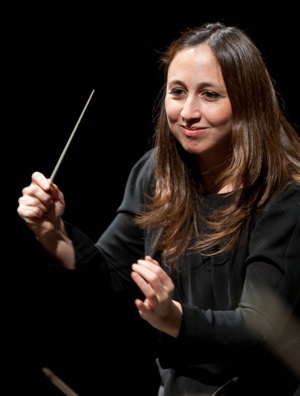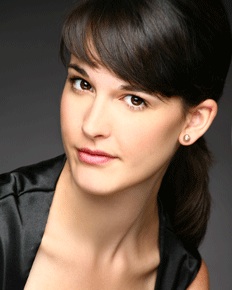A full house and a pair of Finns – Berkeley Symphony wins another hand.
Last Thursday, May 1, Joana Carneiro led the Berkeley Symphony in the last concert of the season, featuring two audacious and contemporary Finnish composers and Beethoven’s powerhouse Fifth Symphony.
 This was a moment of nostalgia for Carneiro, who polished her craft conducting the Los Angeles Philharmonic under the tutelage of Esa-Pekka Salonen, for that was one of the two Finnish composers on the program. The other, Kaija Saariaho, is one of Europe’s preeminent composers, and Carneiro had the opportunity of conducting her Adriana Mater at its premiere. Tonight’s song cycle, Adriana Songs, is taken from that opera.
This was a moment of nostalgia for Carneiro, who polished her craft conducting the Los Angeles Philharmonic under the tutelage of Esa-Pekka Salonen, for that was one of the two Finnish composers on the program. The other, Kaija Saariaho, is one of Europe’s preeminent composers, and Carneiro had the opportunity of conducting her Adriana Mater at its premiere. Tonight’s song cycle, Adriana Songs, is taken from that opera.
And lastly, Beethoven’s Fifth is what Carneiro chose five years ago during her audition for Berkeley Symphony’s two-year search for their new conductor, and her conducting so revealed her respect, fierce intelligence and huge heart that she and her musicians are still in love five years later.
Salonen’s Nyx is a tough piece. Named for the Greek goddess of night, it strives towards the palpable substance of darkness. He does not try to evoke the star strewn coolth, nor the slow stealthy movements of the night, but rather layers the breathing of the earth with waves of thick indeterminacy.
French horns built the atmosphere, at first sounding as if they were tuning up and nearly unaware of each other, and then leaping past each other in a froggy frenzy, building to a dissonant cloud of sound. The orchestra roared in, unexpectedly big on the bottom, with crescendos and collapses like storm surf, leaving behind shimmers and bassoon notes. Then a clarinet solo, perfectly realized by Roman Fukshansky, gave us cool notes and liquid melodies.
Carneiro brought them back into a huge ensemble sound, and one could see that the orchestra was enlarged, and engorged with brass. One could imagine giants climbing scales of stone and waves breaking on the sand, but somehow what came through was a tortured uncertainty. I don’t know if it “worked,” but it was a thrilling ride!
Saariaho was the opposite. Her texts, on birth and blood, were deeply personal, and she built each chord from its own “afterimages,” preferring a French Serial approach. There was a sense of sublime care here, an attention to the genesis of sound while also making space for the mezzo soloist, Laura Krumm.
Big attacks and long decays framed Krumm, whose tight vibrato, lingering sibilants, and inward melancholy created a gorgeous sound. And as a last minute stand-in she was even more impressive. Saariaho moved from flute to metal to wood, and then shimmered over half-step dissonances for an otherworldly beauty.
This orchestra has never sounded better.
And then the payoff!
 Beethoven spent four years writing his Fifth Symphony, finishing it in 1808. As a masterwork, it is indubitably the foundation of everything that followed in the Western Hemisphere. Thought written for the smaller halls of that age, the Berkeley Symphony packed the stage for Zellerbach’s vaulted space, adding in every category and including 12 members of the Berkeley Youth Orchestra interspersed among the seasoned performers.
Beethoven spent four years writing his Fifth Symphony, finishing it in 1808. As a masterwork, it is indubitably the foundation of everything that followed in the Western Hemisphere. Thought written for the smaller halls of that age, the Berkeley Symphony packed the stage for Zellerbach’s vaulted space, adding in every category and including 12 members of the Berkeley Youth Orchestra interspersed among the seasoned performers.
Simply said, they rocked the house.
Sure, there were problems. The sound was a little too rounded, and there was a least one “oops” moment. But Carneiro created phrasing and dynamics that I have never heard. And there was so much heart that at some point I stopped thinking critically and just let the tears flow.
Thank you from the bottom of my heart, Joana.
—Adam Broner
Photo top of Joana Carneiro, by Dave Weiland; below, of Laura Krumm
